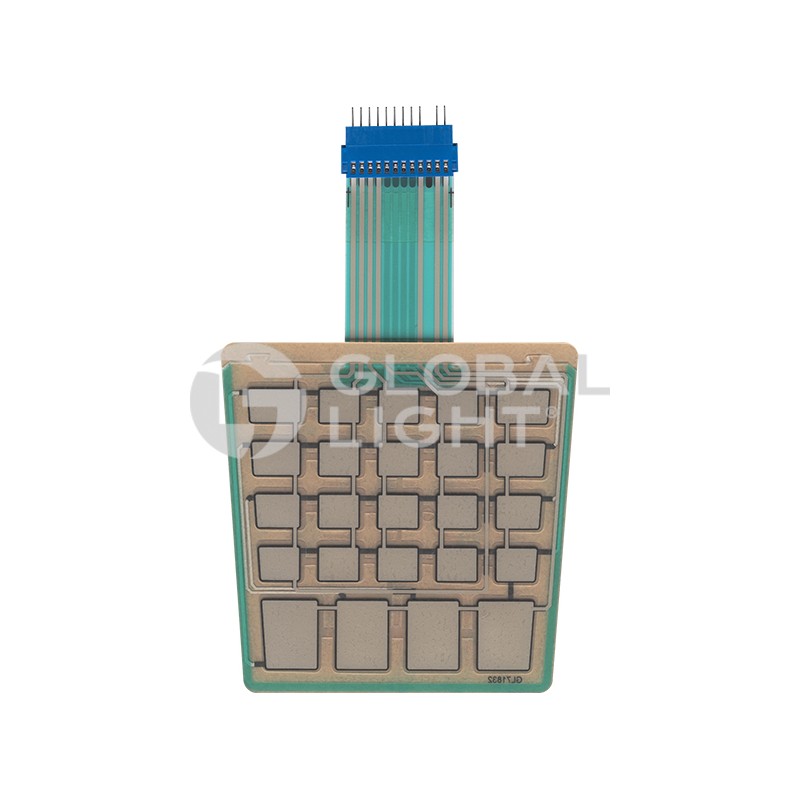Why Membrane Switches are Ideal for Durability and Performance
Why Membrane Switches are Ideal for Durability and Performance
Blog Article
Comprehending Membrane Switches: The Secret to Long Lasting and Reliable Controls

What Are Membrane Switches?
Membrane layer switches are an innovative remedy in the realm of interface modern technology, combining capability and design perfectly. These gadgets work as a user interface between users and digital systems, incorporating several components into a small layout. Usually built from versatile, slim layers of products, membrane layer buttons are created to react to touch, enabling users to communicate with machinery and electronic gadgets successfully.
The key components of a membrane layer button consist of a published circuit layer, graphic overlay, and a spacer layer that avoids unintentional activation. The graphic overlay can be customized to reflect brand identification or customer choices, improving visual appeals while making sure functionality. Membrane buttons are generally made use of in numerous applications, including medical devices, customer electronic devices, and industrial equipment, owing to their resilience and resistance to environmental factors such as dampness and dirt.
One of the key benefits of membrane layer switches is their ability to hold up against damage, making them suitable for high-traffic atmospheres. Furthermore, they are lightweight and require marginal area, permitting innovative designs in product growth. Generally, membrane layer switches over stand for a reliable and functional choice for modern-day electronic user interfaces, marrying modern technology with user-centric style concepts.
Exactly How Membrane Layer Changes Job
The procedure of membrane layer switches hinges on a basic yet reliable mechanism that equates customer input into electronic signals. When a customer presses the button, the leading layer deforms, enabling a conductive aspect in the circuit layer to make call with a corresponding conductive pad on the underside of the graphic overlay.
The style of membrane layer buttons can differ, but they frequently integrate domes or responsive components to provide feedback to the individual, improving the general experience - membrane switch. The products made use of in membrane layer buttons, such as polyester or polycarbonate, contribute to their sturdiness and resistance to ecological aspects, consisting of dampness and dirt. The printed circuits are generally enveloped, which secures them from wear and tear over time.
Advantages of Membrane Layer Buttons

In addition, membrane layer buttons are known for their longevity. Constructed from robust materials, they are immune to dirt, dampness, and physical wear, which considerably prolongs their life-span contrasted to conventional mechanical switches. This durability makes them especially ideal for high-traffic atmospheres and applications calling for long life.
An additional substantial advantage is the convenience of cleansing and maintenance. The smooth surface of membrane switches minimizes dust accumulation and is commonly resistant to spills, making them perfect for settings that require frequent sanitization.
In addition, membrane switches offer a structured account, bring about a thinner style that can be integrated into various tools without including bulk. This feature not just boosts the aesthetic appeal but additionally adds to a much more ergonomic product layout.
Applications of Membrane Layer Switches
Straightforward and flexible, membrane buttons discover applications across a large range of markets, including clinical gadgets, consumer electronics, and commercial equipment. In the medical area, these switches are integral to devices such as analysis devices, client surveillance systems, and infusion pumps, where dependability and simplicity of cleansing are vital. this page Their capacity to stand up to rough settings and preserve functionality makes them excellent for such applications.

In consumer electronics, membrane layer switches are utilized in items like microwaves, washing makers, and remote controls - membrane switch. Their smooth layout permits user-friendly customer interfaces, enhancing the general individual experience while giving resilience and resistance to put on and tear
Industrial devices additionally takes advantage of membrane buttons, specifically in control panels for machinery and automation systems. These switches use defense against dust and wetness, ensuring consistent efficiency in tough environments. Their adjustable attributes permit producers to tailor them to certain functional demands, boosting efficiency and capability.
Picking the Right Membrane Layer Switch Over
When selecting a membrane layer button, it is necessary to consider various elements that influence performance and suitability for specific applications. The key factors to consider consist of ecological conditions, tactile feedback, resilience, and design requirements.
First, analyze the operating setting; buttons subjected to wetness, chemicals, or extreme temperature levels call for certain materials to ensure long life and capability. Next off, examine the requirement for Continued tactile feedback. Relying on individual interaction, some applications may gain from a tactile response to validate activation, while others might choose a non-tactile design for visual factors.
Sturdiness is another critical aspect; membrane switches need to be created to endure frequent usage, browse around this web-site impacts, and abrasion. Make certain the chosen switch can withstand the expected lifecycle, specifically in high-usage situations.

Verdict
In final thought, membrane switches over serve as necessary components in the style of sturdy and reputable control systems throughout numerous industries. The adaptability of membrane layer switches enables for customized remedies that meet particular functional demands, reinforcing their importance in contemporary innovation.
Membrane layer switches over represent a vital facet of modern-day interface style, mixing capability with strength in numerous applications.Membrane layer switches are a sophisticated service in the realm of individual interface innovation, incorporating capability and design seamlessly. Usually created from adaptable, slim layers of products, membrane layer buttons are designed to respond to touch, enabling users to communicate with machinery and electronic devices efficiently.
The layout of membrane layer switches can differ, however they usually integrate domes or responsive aspects to supply comments to the individual, improving the overall experience.In conclusion, membrane layer switches over offer as necessary elements in the design of reliable and sturdy control systems throughout different industries.
Report this page